Known as the queen of winter flowers, Camellias are evergreen shrubs that produce magnificent blooms. Highly prized yet down to earth, this beauty is unrivalled for glamour with its compact shapely habit, stunning evergreen foliage, and of course, its amazingly beautiful flowers. While there are almost 300 species of them in Australia and thousands of varieties, there are those that are more commonly grown as landscape shrubs. Here’s how to select, grow, and care for your Camellia.

Camellia Flowers 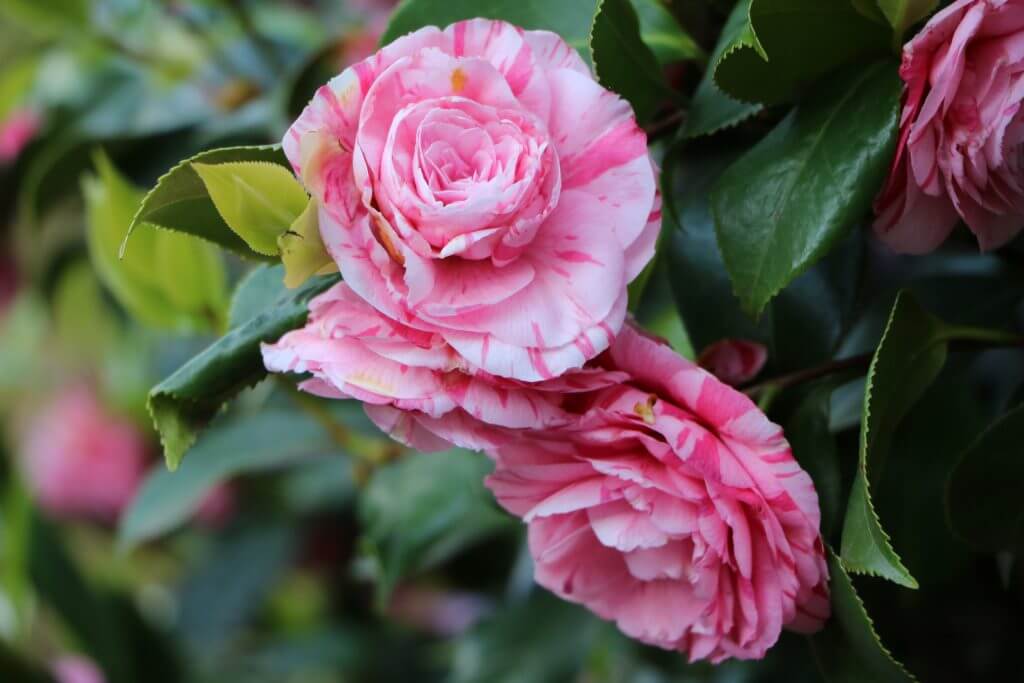
Pink Blooming Camellia
Choosing Your Camellia
For every position in every garden, there’s a Camellia to suit the purpose. Whether you’re located in the cooler climes around the hills of Melbourne and Sydney, or to sometimes humid and hotter locations in Southeast Queensland, or further north, Camellias flourish in a variety of conditions. You just have to know which species to choose for your garden, for it to perform at its best. Here are three of the most common favourites for you to choose from.

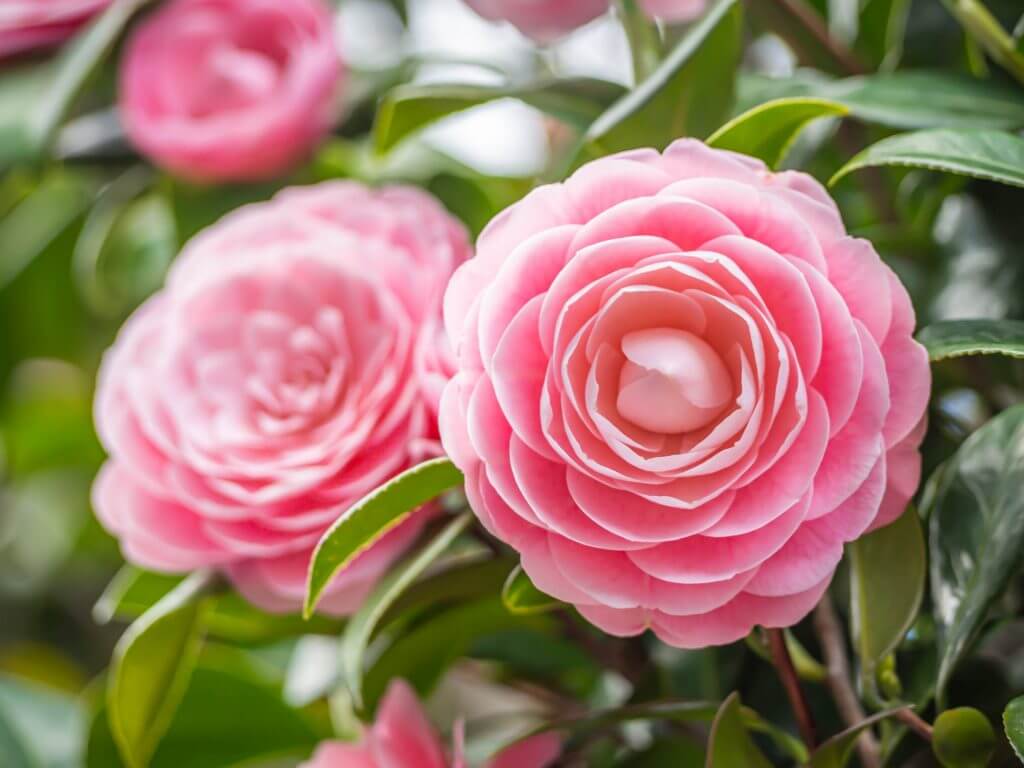
Pink Camellia 
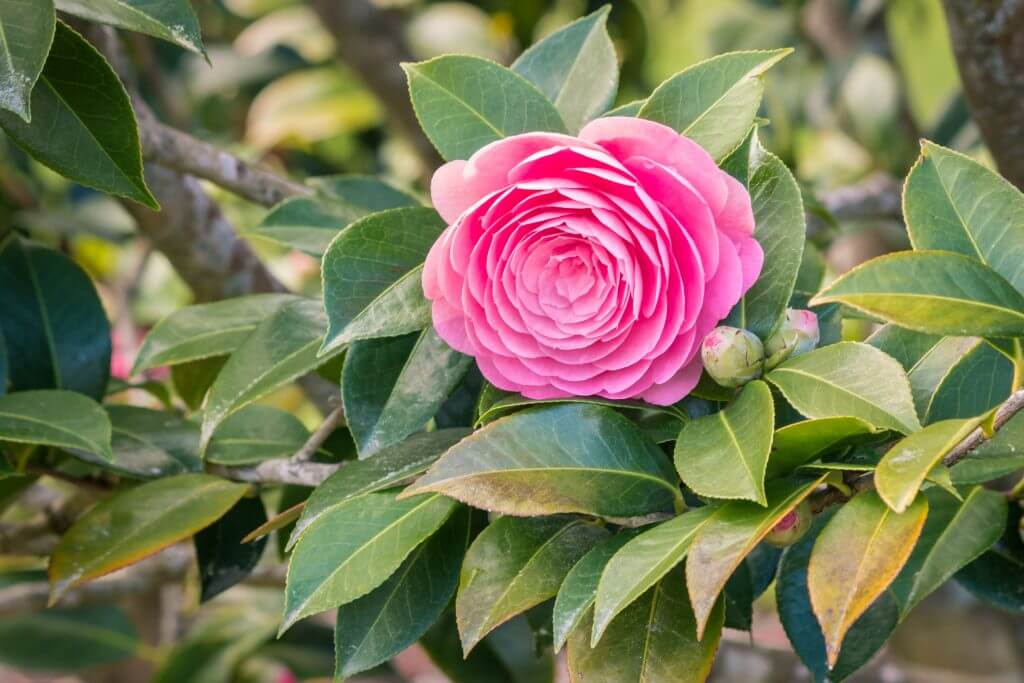
Pink Camellia Flower
Camellia Japonica
Are you from the frosty hills of Tasmania or the subtropical Brisbane? If so, then this is the right Camellia for you, as they prefer some dappled light or shade to protect their winter-borne flowers and to prevent their leaves from scorching. They grow into a typical yet beautiful small tree, and flower from around May through July, although some varieties such as Are-jishi and Alba Plena start flowering as early as April.
Japonicas are best as mass plantings, as a single specimen, or in a mixed garden planting. Their flowers come in a variety of colours and designs that you will love, such as palest pink to dark pink, pure white, cream, orange-reds to purple reds, striped, blotched, or edged.
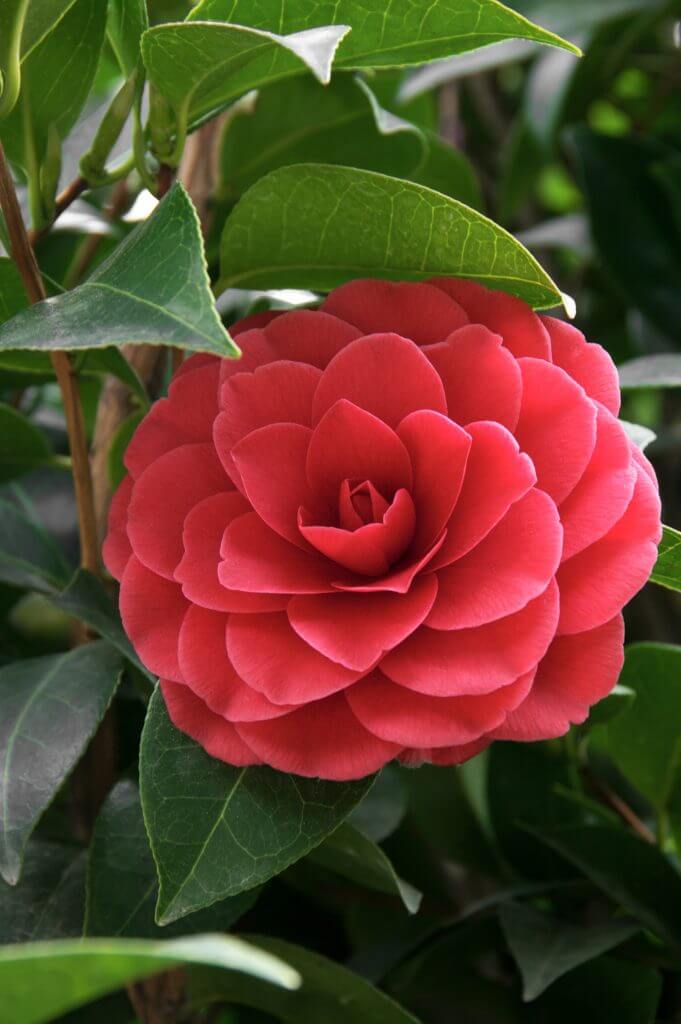

Here are some of the most popular varieties of Camellia Japonica (and other hybrids):
- Desire – This variety has soft pink with deeper pink outer petals that are formal double long-lasting blooms. The shrub is strong and upright with lush foliage.
- Brushfields Yellow – This variety is great for pots with its medium-sized “antique white” flowers, and the boss of petaloid in the centre are ruffled yellow primrose.
- Debbie – This variety has fully double blooms that are bold rosy-pink and has an upright growing shrub. It’s perfect as a hedge in slightly shaded areas.
- Volunteer – Camellias can’t just get enough of pinks. This variety has deep rich pink anemone flowers that are multicoloured with on each petal with its white edge. It was named as such, in commemoration of the International Year of Volunteers in 2001.
- Grand Marshall – If you love red better than pink, this one’s for you. It has large vivid red informal double flowers with a strong upright growth habit. It’s great for hedging and screening up to 3 meters.
- Dona Herzilia De Frietas Magalhaes – This variety has beautiful flowers that are large informal double to double centre and are violet rose-red that turns blue as they age.
- Are-Jishi – This beauty has peony-form watery-red flowers, although it also has a wide array of cultivars with every possible shade of pink, red, white, and multicolours. Best to be around a protected climate without extended heavy freezes.
- Alba Plena – This is an incredibly beautiful variety of Camellia Japonica with its medium-sized, formal double flowers that have over 100 petals in porcelain white. It’s great for woodland gardens or as a screen and hedge.
Camellia Sasanqua
If you love the sun, this gorgeous species of Camellia does too. They cheerfully grow and produce the best flowers in full sun, and prolifically over a long period. While they have similar colour and form range as Japonicas, Sasanqua flowers are smaller with only 5 to 9 cm size range.
When in full bloom, they tend to shatter easily and fall after a day or two, which leaves a glorious carpet of petals on the ground. They are usually used as a hedge, but can also be used as a foreground or a background planting, depending on the variety. They are also great espaliered, bonsai, cascaded over rockeries, potted, or even as a garden specimen. If you’re looking for a versatile Camellia cultivar, then look no farther. Camellia Sasanqua is the one for you.


Here Are Some of The Most Popular Varieties of Camellia Sasanqua:
- Early Pearly – Savour the loveliness of its pearl white double flowers with outer rows of blush petals. It’s great potted, hedged, or espaliered against a wall. A Camellia variety that’s perfect for those with slightly acidic oil.
- Asakura – This variety has gorgeous large semi-double white flowers, shaded with pale red on the reverse side that will surely brighten your garden throughout winter and early autumn. It’s great as a screen, hedge, on large containers, and espaliers. Best with full sun and partially shaded areas.
- Star Above Star – Bring the stars down to your garden with this awesome Camellia Sasanqua variety that has semi-double flowers in pale pink, flushed with pale violet. Best grown in a protected climate that’s free from extended heavy freezes.
- Bonanza – An early season bloomer, this baby has peony-like blooms and a versatile spreading habit. Create a colourful hedge or espalier. You can even use it as a shading plant to provide protection from the sun.
- Showa-No-Sakae – Be enchanted with its exquisite semi-double, ruffled blooms with bright gold stamens. It has upright, slightly weeping branches that display glossy, dark green foliage that brings a whimsical contrast to the blooms. It’s great as a colourful low hedge, espalier, or ground-cover.
- Bonsai Baby – One of the gardeners’ top favourites, this variety is a wonderful addition to any garden with its abundant semi-double deep pink to mauve-toned flowers. It’s best for winter colour, specimen planting, and can be pruned for hedging or natural screening.
- Paradise Blush – One of the most sought-after varieties of Camellia, you can create a paradise in your own garden with its lovely white semi-double flowers that have a shade of pink on the reverse side. It has a dense, upright, and vigorous growth habit that makes it ideal for hedging and screening. It’s also great for large tubs or as a feature plant.
- Hiryu – Be prepared to be amazed by its large, semi-double deep pink flowers that grow in full sun. It thrives in morning sun or part shade. It’s best for hedging or screening. If you like fragrant and aromatic flowers, go for this one.
Camellia Reticulata
The “glamour girls” of Camellias, these species are named for their distinguishing characteristic of veining on the leaves. Its flowers can grow into a massive 20cm (8″) in diameter. That’s the size of a dinner plate! So, if you like enormous flowers, this is the perfect Camellia for you.
Colours vary from shades of pink to red. It’s the gardeners’ favourite for hybrid either with Japonica or Sasanqua. It thrives excellently in temperate climates of Melbourne, Perth, Sydney, Adelaide, and Tasmania, and on some inland areas if sheltered from hot, dry winds. Reticulata can tolerate a fair amount of sun, but they are spectacularly flowering in winter. Select a variety that suits your specific climatic conditions.
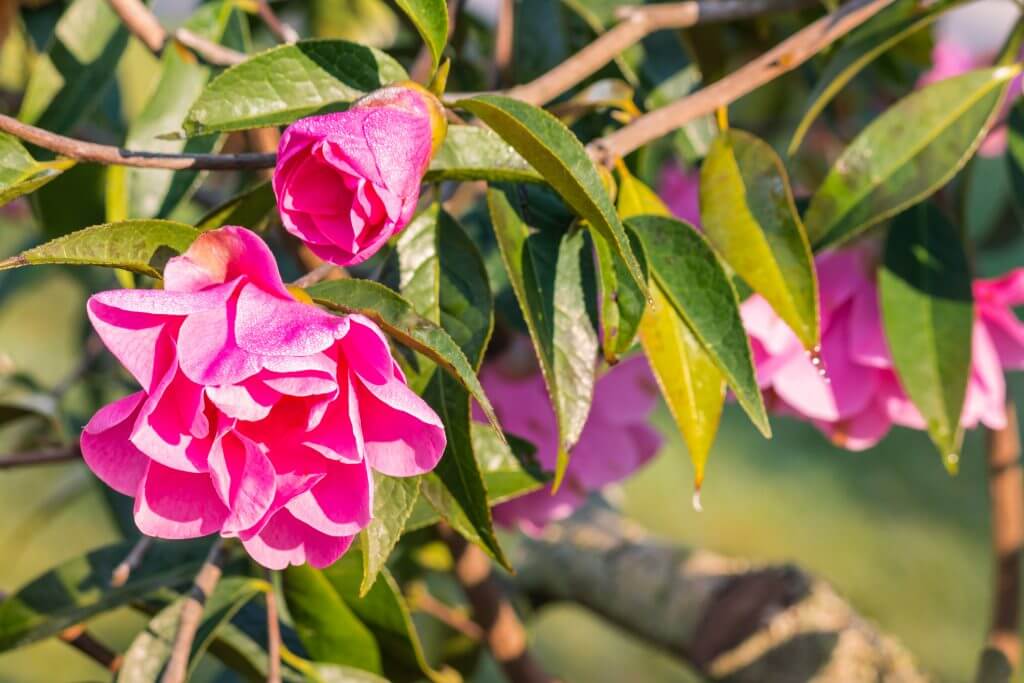

Here are some of the most popular varieties of Camellia Reticulata:
- Dr. Clifford Parks – Like a lady with red lipstick, this beauty puts forth peony form or anemone form of enormous flowers in deep scarlet red colour. Best grown it in a protected climate without extended heavy freezes.
- Dream Girl – This girl can make your dreams come true as it produces very fragrant, semi-double flowers in peach-pink tone. A true heritage plant, this cultivar loves the sunny situation.
- Ellie’s Girl – Grow this beautiful, very large, formal, deep pink, double flowers during the cooler months of the year to have a stunning evergreen garden. It makes a wonderful hedge, espalier, or featured pot.
- Lasca Beauty – True to its name, this Reticulata variety produces beautiful and sizable semi-double flowers in delicate pastel pink. A perfect garden landscape on coastal conditions.
- Red Crystal – This variety bears magnificent, very large, semi-double bright scarlet flowers with a strong boss of a gold stamen. It can withstand the morning sun during winter.
- Francie L – Another bearer of very large semi-double flowers in a vivid magenta, they are showy and old fashioned. The shrubs can grow as tall as 10 ft. to 20 ft., and as wide as 5 ft. to 12 ft., so if you have quite a sizeable garden, this is the one for you.
- Milo Rowell – You will love the large, rich pink blooms with gold stamen of this Reticulata variety. It grows vigorously with a loose bushy habit. Its best grown in partly shaded areas.
- Show girl – Girls they are, indeed! This one loves to show off with its large, semi-double, bright-pink flowers. They love the summer sun so, if you’re on the sunnier side of the country, you can never go wrong with this girl.
These are just some of the most common varieties of Camellia that you can choose from, but there are many, many more. Consider the climate, conditions, types of soil, and other factors before you decide on which one to select.


Camellia 
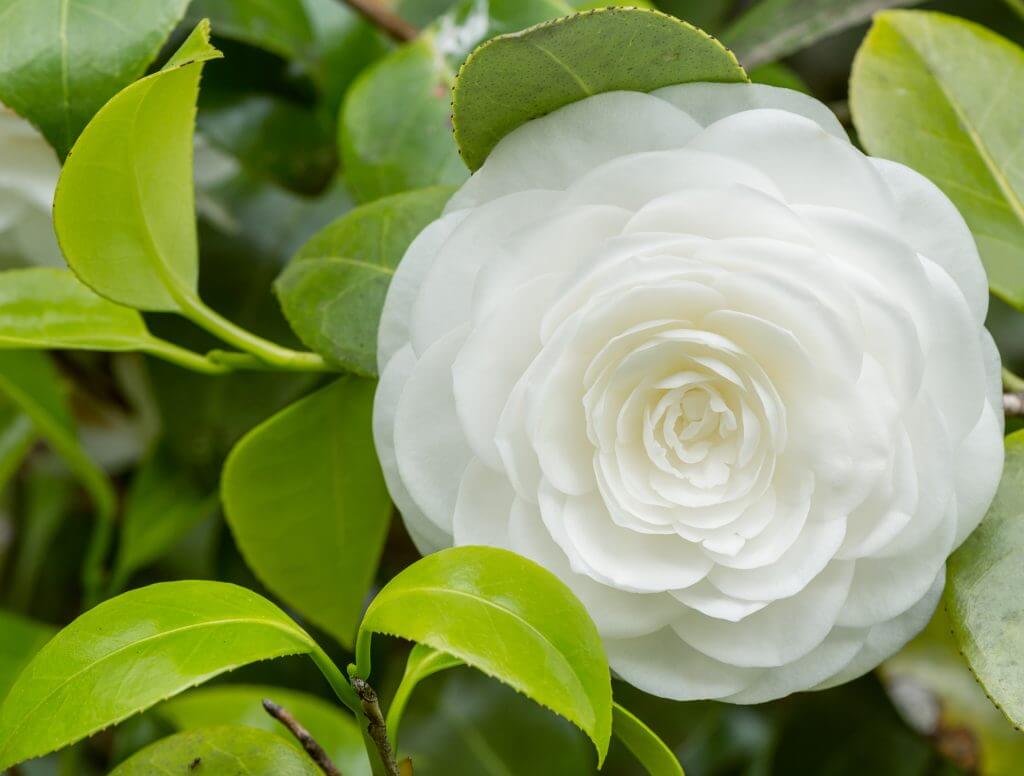
White Camellia Flower
How to Grow And Care For Your Camellia
While roses are hailed the queen flowers, Camellia’s reign during in autumn and winter, and thus hailed the queen of winter flowers. Contrary to popular belief, they don’t need lots of pampering like other queenly flowers. With the right care and conditions, they are tougher than you think.
- Camellias usually take 2 years to fully establish new roots once planted so, water them regularly, especially during summer and spring.
- Fertilise them twice a year. First in early spring to enhance growth and in late summer for further growth and more flowers.
- Choose the soil that is slightly acidic with a pH of 5-6.5. The best soils for Camellias are those that are deep, friable, well-drained, and enriched with cow manure and compost.
- Plant it in a hole twice as wide and as deep as the root ball. For a hedge, prepare the full bed rather than individual holes.
- Mulch it once a year with Lucerne hay, sugar cane, or autumn leaves compost.
- Prune it in late winter or early spring to reshape it or remove dead woods. Older Camellias can be heavily pruned back to control its size or to revive its growth, while the once grown for hedging should be pruned all over.

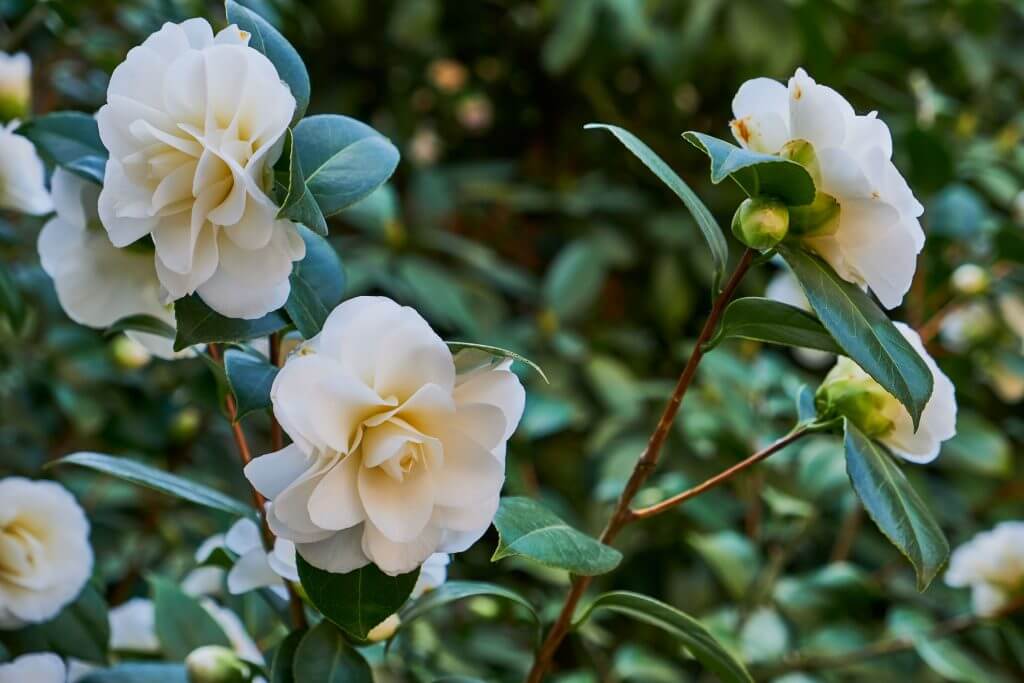
Camellia 
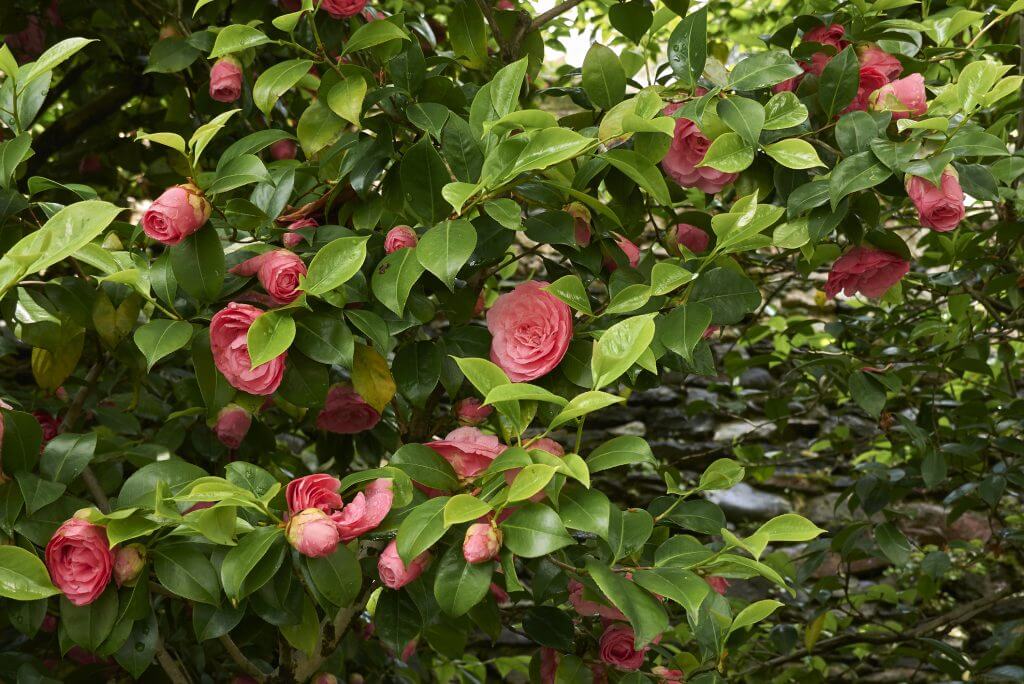
Camellia Bush
Like what most plant experts will say, there’s always a Camellia (or two) in every garden. They are one of the best flowering plants in the world. Hardy and disease resistant, they can live in your garden for a very long time, as long as you care for them like your babies. They will put on a fabulous display of magnificent blooms in the cooler months while the other gardens are dull and bare. Let us know which Camellia you choose in the comment below.

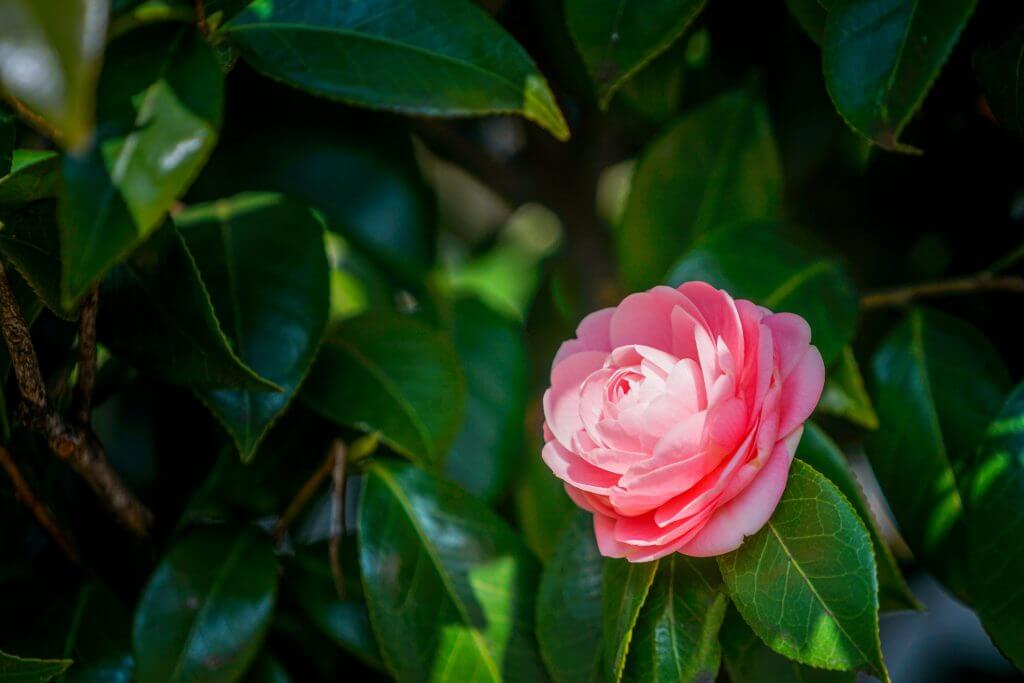
Pink Camellia Flower 
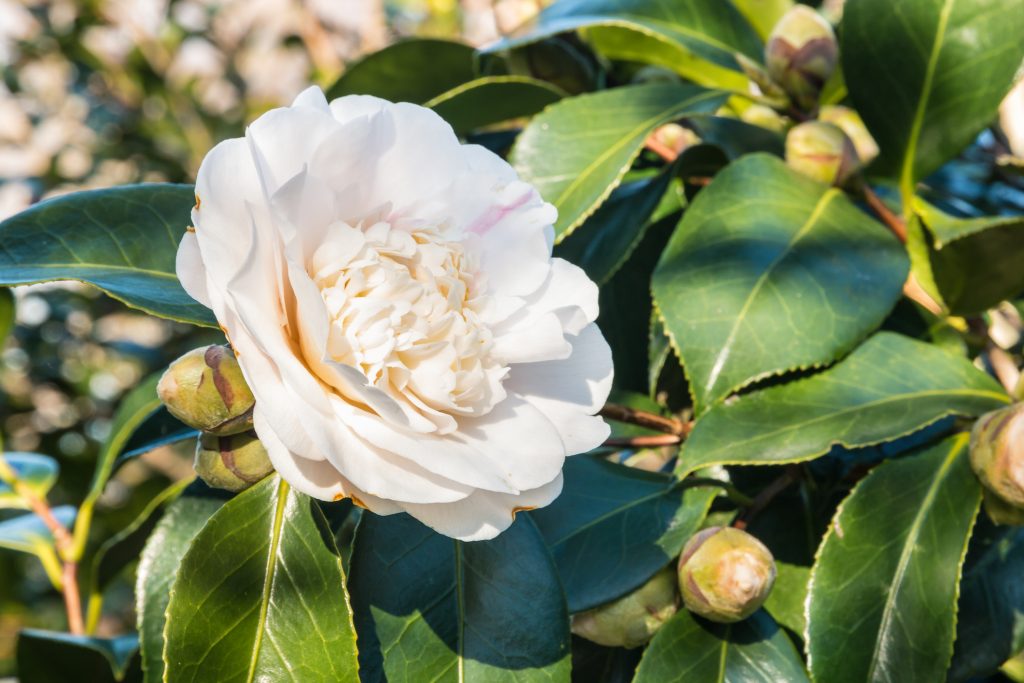
White Camellia

Have enjoyed reading all about the camellias and just wanted to know would I be able to move a sassanqua one that is rather very tall as I have to do so,I prob would have to cut it by half to do so? I love all my camellias,I have about 20 throughout my garden.hope you can give me some advice cheers.
Hi Julie,
In this case, it is going to be unlikely. You can definitely give it a go but I would be doubtful that it would survive once transplanted. When trees get to a certain size it’s really difficult to move them without damaging any of the roots.